2023年TX後期交換留学生
紹介レポート
多摩美術大学生産デザイン学科テキスタイルデザイン専攻、2023年度後期の交換留学生を紹介します。
Emily Stewartさん(Grasgow School of Art)、Liel Fibakさん(Gerrit Rietveld Academie),Janaina Chiara Linda Bergstoetterさん(Angewandte – University of Applied Arts)、Madeleine Macaulayさん(Grasgow School of Art)、Momoka Shimpoさん(Chelsea College of Arts)、Zhihan Zhuさん(Chelsea College of Arts)の6名の皆さんが9月から1月まで、さまざまなクラスに参加し制作に取り組みます。
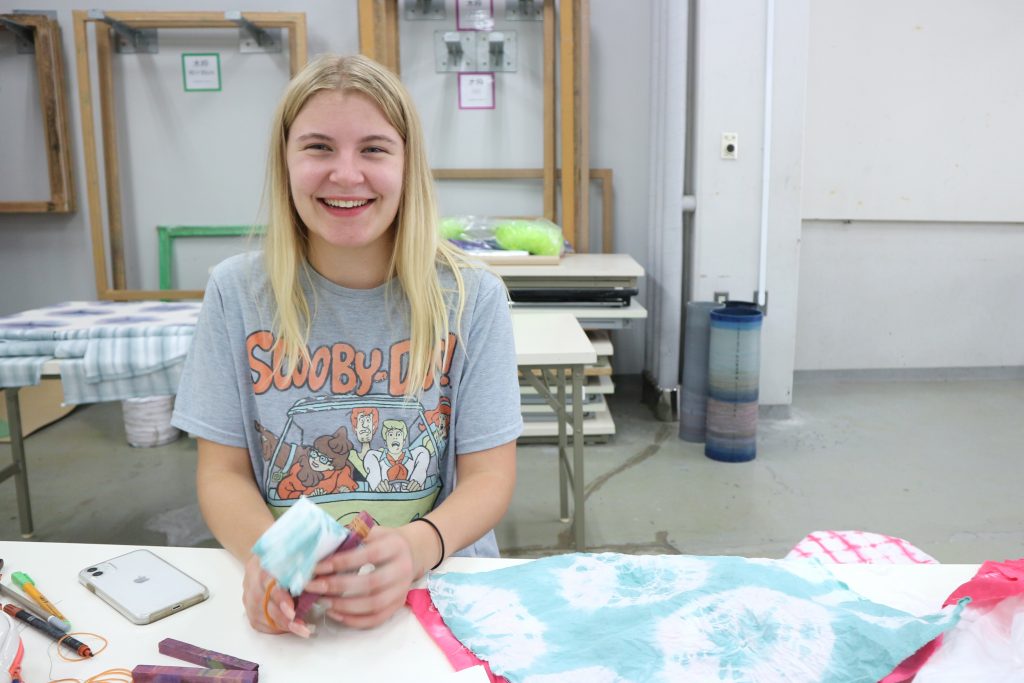
Emily Stewart
Hello, my name is Emily I’m from Scotland and I attended Glasgow school of art. I’m in my third year of textile design and got the opportunity to study for a semester abroad at Tamabi Art university. I’m very grateful for this experience and I’m loving every second of it. The facilities and studio spaces are very impressive and the standard of work here is outstanding. Despite not being able to speak Japanese I am still learning so much from the sensei’s and the students are always very inclusive and helpful. I’ve been working on a floral design for my yuzen class and have been experimenting with different dying techniques for my shibori class. I am about to begin a geometric woven wall hanging for my first year class that I am very eager about. It’s a privilege to be able to study on such a beautiful campus and absorb the Japanese culture. I have also met some amazing people on the exchange program who have made me feel welcomed and supported throughout my time in Japan .
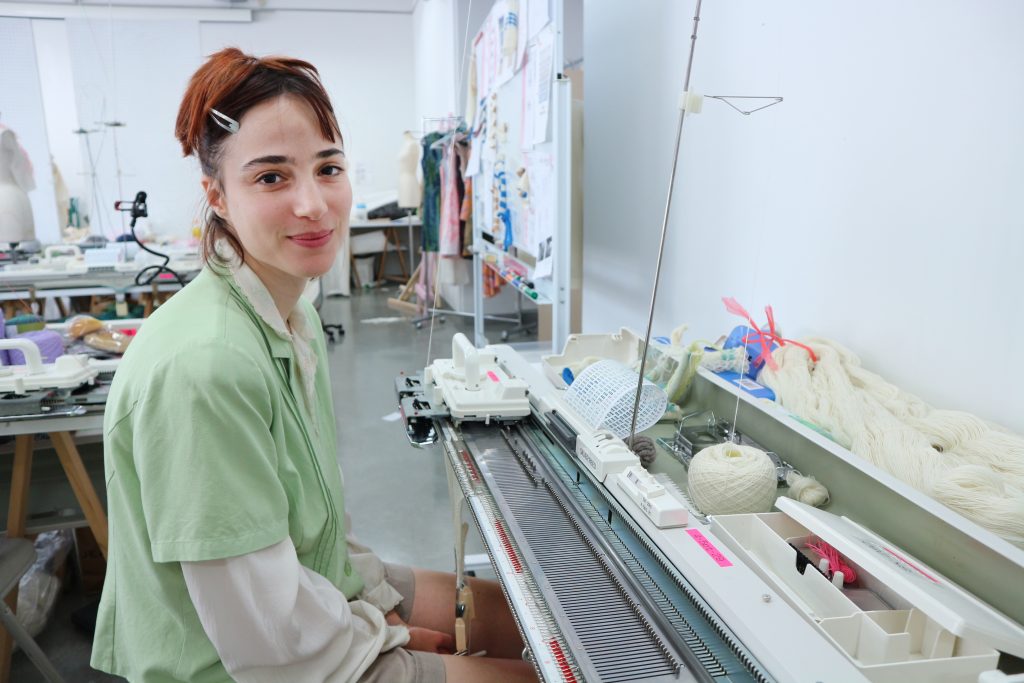
Liel Fibak
I create through and in several art disciplines, combining all that favors the message when creating my works. Yet the material and analogue essence are sacred to me. My approach is to listen to the behavior of the substance and to change along with it. Going back to simplifying the origin helps me to neutralize the expected norms.
Diving deeper
Physical presence and the body as our existence is a theme that I always come back to. Be that as it may, I am a creating individual who uses movement as her main medium. It has positioned itself as the skeleton of what I do. At the hand of dance, I learned to translate reality into movement and to value the infinite flowing information that exists in our body. Exploring physicality as a medium of art and studying my body as a raw material allows me to loosen the borders of our preconceptions and enrich both the experience and my practice. I adore the idea of a medium that goes beyond linguistics, the infinity of sensorial freedom.
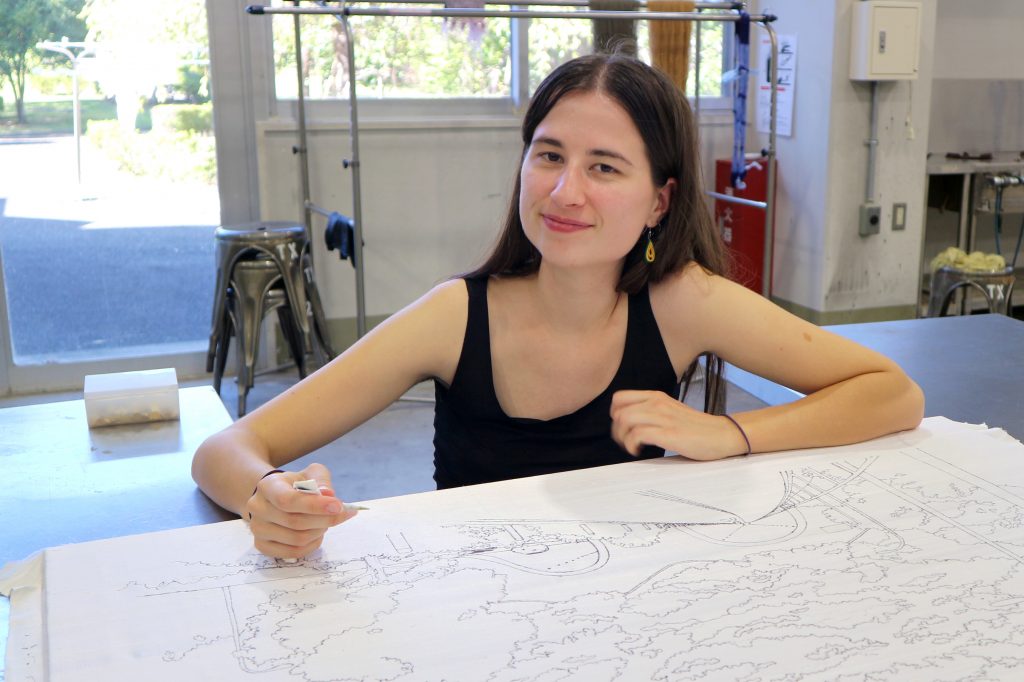
Janaina Chiara Linda Bergstoetter
I am from Austria where I am studying for two master’s degrees in fashion and fine arts; drawing and printmaking at the University of Applied Arts Vienna.
In my work I reflect on material culture, gender roles, social taboos, nostalgia, three-dimensionality and flatness. Recently I focused on the social and personal value of clothing, using garments as the starting point for lithographic series or flat textile objects.
I decided to go to Tamabi because I wanted to expand my knowledge of printmaking and drawing on textiles, and because I have long been interested in traditional Japanese textile dyeing techniques such as shibori and yuzen.
In Tokyo, I continued to work with clothing as an unintentional means of communication as a theme to incorporate into my dyeing projects
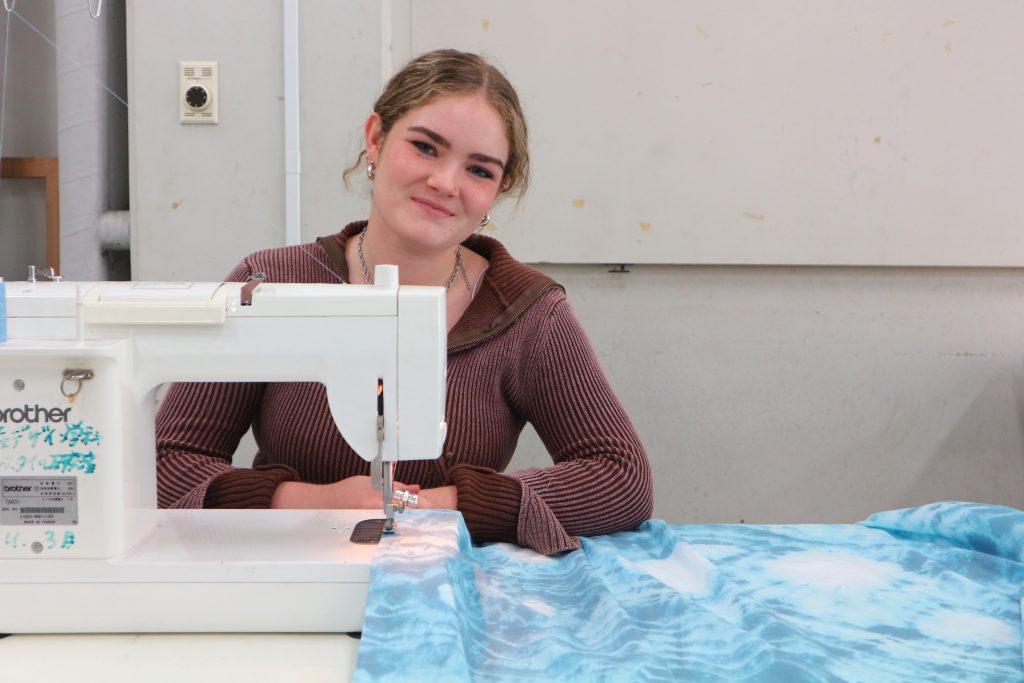
Madeleine Macaulay
I chose Tamabi because I wanted to experience Japanese culture. With the opportunity to learn about the traditional print techniques in this part of the world. The campus is different from my home university as there are large open green spaces. Creating an inspiring, secluded place to focus on work. The library is beautiful, with a great selection of books related to courses and a wide scope of topics. There is a broad selection of courses, which gave me the freedom to create my own schedule and study plan. I chose Shibori, Yuzen and Katazome, I also participated in a paper-making class.
Everyone is very friendly and eager to help. Although the classes are taught in Japanese, they are very patient with the language barrier. However, I recommend learning some Japanese before coming to Tama for a more advanced understanding of your courses.
The textiles office, teacher assistant and exchange office are very generous. Creating a smoother transition into a different teaching style. Classes are more structured. Everyone in the class is creating similar technical work, seeing through a set amount of work from start to finish.
It is a great opportunity to expand my perspective of design and my independent thinking. I also enjoyed exploring Japan, which has been and will be a draw for inspiration in the future.
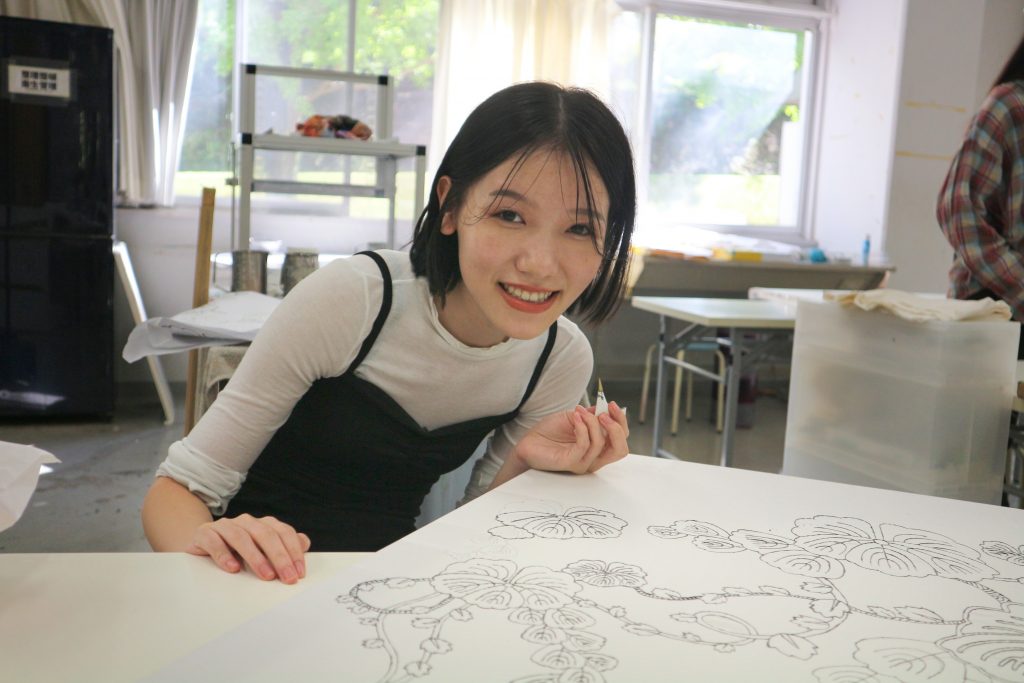
Momoka Shimpo
My name is Momoka and I am Japanese, born and raised in UK, London. I’m in the second year studying textile design at UAL Chelsea college of Arts. I love exploring different possibilities in textile art, incorporating peculiar materials and medias to create an odd, unique outcome. I specialize in print, therefore I chose to study at Tama Art University to learn different kinds of traditional Japanese print-making hoping I can utilize the techniques in my artwork in the future.
I chose five print-making techniques to investigate within the course program and they are shibori, katazome, Yuzen, paper-making and silk screen printing. I enjoyed each techniques and I wish to use these approaches, or even combining them together in my other upcoming projects.
Even though I love all traditional methods at Tama Art University, the technique I found interesting the most was Yuzen and Katazome. Yuzen is a traditional Japanese process which involves drawing designs on white fabric with a special kind of paste resist before coloring the fabric, whereas Katazome is another Japanese method of dyeing fabrics using a resist paste applied through a stencil (a rice flour mixture). However, l enjoyed learning all methodology and approaches at Tama Art University!
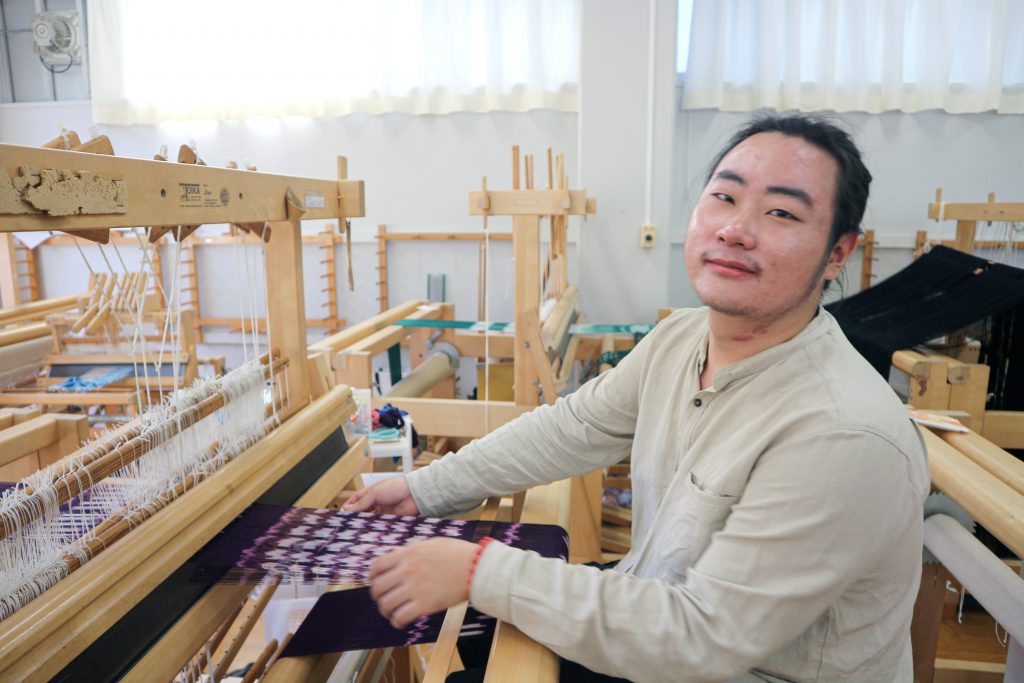
Zhihan Zhu
I’m Zhihan Zhu. From Chelsea college of arts and design. I study for textile design and weaving.I am doing katazome, ikat, textile and society,blanket,weaving these 5 projects at Tamabi. At here I feel the education system is completely different from before. This allows me to better combine western and eastern ideas and be more creative in my works.
In the katazome and ikat projects in particular, I have personally practiced these two techniques that are enduring in Japanese culture. This aroused my desire to explore some old but still meaningful techniques in the future.
However, in general, I feel a lot of academic pressure here, so how to balance the mentality and time becomes very important. My time in Japan will be unforgettable for the rest of my life. He taught me that we need to keep pushing forward even when we are in adversity.